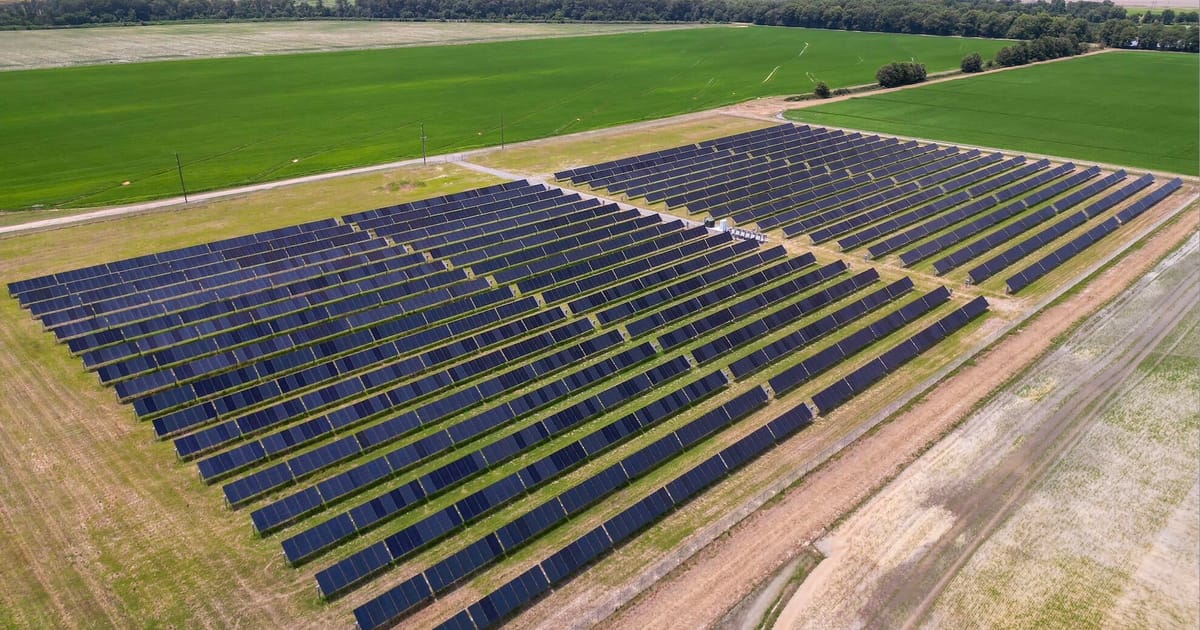The $20B US ‘green bank’ program just funded its first project
October 1, 2024

Climate United also hopes that this first-of-a-kind financing of the pre-construction expenses of mid-size solar installations — a category of costs that includes permitting and interconnection fees and which developers now pay for themselves — will help other private-sector lenders “reduce the delta between actual risk and perceived risk in the market,” she said.
But perhaps most fundamentally, Bafford said, “the Scenic Hill transaction was ready to go and needed the funding on a timeline we could meet — and could meet the requirements of the federal program.”
Finding projects that meet the green bank program’s rules
One of the program’s more challenging requirements is set by the Build America Buy America Act, part of the Bipartisan Infrastructure Law passed in 2021. The act requires certain federally funded infrastructure projects, including from the green bank, to use iron, steel, manufactured products, and construction materials produced in the U.S.
Scenic Hill is prepared for this, said Halter. In 2022, the company launched its supply chain initiative American Made, Arkansas Built, which includes U.S.-based companies such as panel manufacturer First Solar, solar tracker giants Nextracker and Array Technologies, inverter manufacturer Yaskawa Solectria Solar, electrical equipment provider Shoals Technologies Group, and steel pipe and tube manufacturer Zekelman Industries.
That effort began after the passage of the Inflation Reduction Act, which created lucrative tax credits for U.S.-based clean energy manufacturers as well as domestic-content requirements and incentives for clean energy projects seeking federal tax credits and funding. The goal was “to facilitate as much as possible raising the percentages of our projects’ domestic content,” Halter said.
Scenic Hill has also helped create solar construction and contracting opportunities for Arkansas companies “instead of bringing in all out-of-state partners to do it,” Bafford said.
Halter highlighted B&K Electrical Contractors, a Little Rock–based electrical contractor that Scenic Hill brought on for its first commercial solar projects with cosmetics manufacturer L’Oréal USA at facilities in Arkansas and Kentucky. “Now we use them on our projects, and they’ve been used by other solar developers in the state as well,” he said.
What makes this project transformational?
Given all the work that Scenic Hill has put into creating a growing commercial solar operation in its region, why does it need Climate United’s financial support? To answer that question, Bafford highlighted several challenges that Scenic Hill and other solar developers face in tapping into new markets.
One of the biggest challenges for developers of commercial and industrial solar projects is a lack of access to capital to finance those pre-construction costs, Bafford said. These include acquiring land, making deposits for solar panels and other equipment, and securing the interconnection rights to allow the solar power to flow onto utility grids. Developers typically pay for these costs out of their own equity capital.
“Right now, institutional capital is not supporting this stage of development,” she said. “Those are gaps that are putting smaller projects and smaller developers at a disadvantage in the market. We’re trying to show this is an investable activity.”
And what’s hard for solar developers nationwide is likely to be especially hard in Arkansas, which now ranks 27th among states for solar, with just 1.35 gigawatts deployed, according to the Solar Energy Industries Association trade group. The state has relatively cheap utility electricity rates, making it hard for solar projects to compete economically. The vast majority of the state’s solar power comes from large-scale projects built under utility contracts, with relatively little coming from mid-size solar projects serving commercial, industrial, and institutional customers.
If it proves to be financially viable, the ability to borrow money to cover pre-construction costs could help boost commercial solar in Arkansas and beyond, Halter said.
“To the degree that you have to devote significant portions of equity capital to those expenses, well, you have two choices there broadly,” he said. The first is “do less of it — you’ll eventually run out of equity capital.” The second is to raise more equity, which is “harder to do and more expensive” for smaller-scale solar developers than it is for larger utility-scale clean energy projects.
That, in turn, ends up raising the cost for would-be buyers of power from these types of solar projects, he said. “If your costs are going up and availability of capital is going down, the only way that comes out on the other side is the electricity prices you’re charging your clients.”
Halter wasn’t ready to speculate on how the Climate United financing might change those dynamics for solar developers like Scenic Hill. However, “if the first mover on something like this succeeds, that does give more confidence to people coming behind,” he said. “What you’re wanting is for all of this to scale.”
Search
RECENT PRESS RELEASES
Related Post
